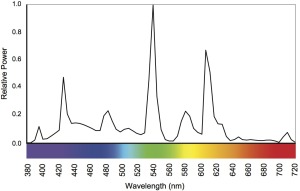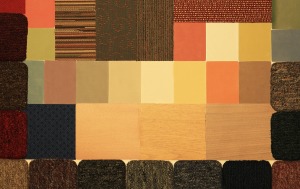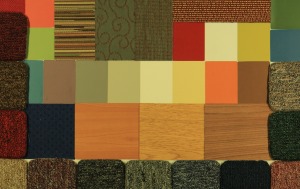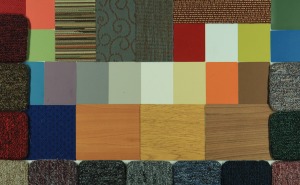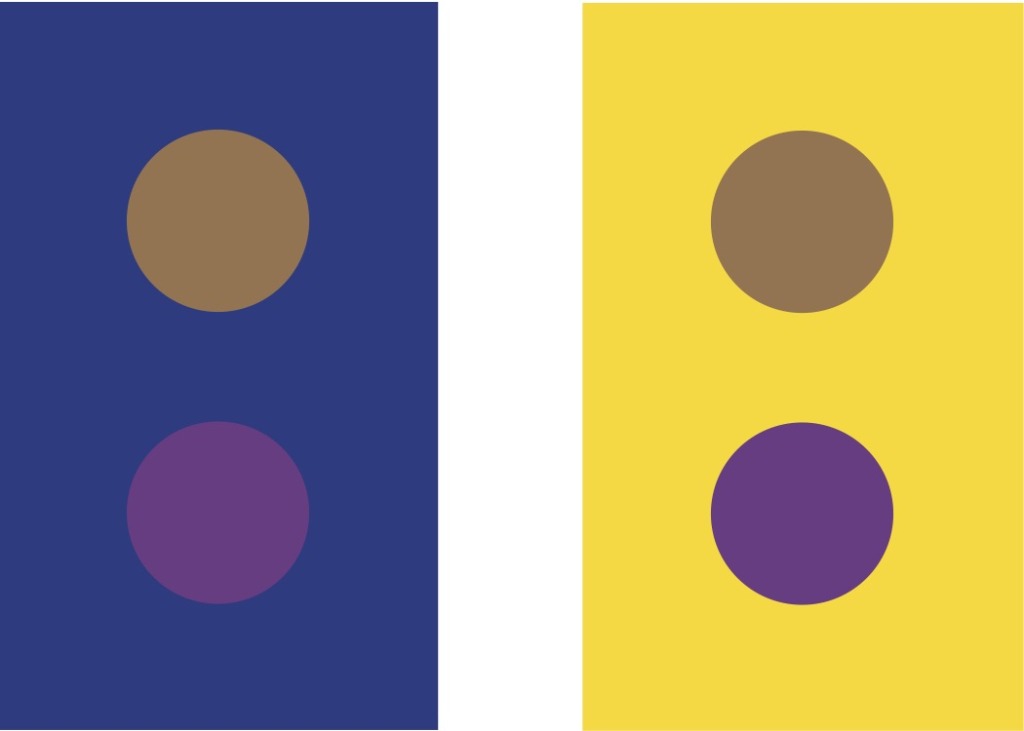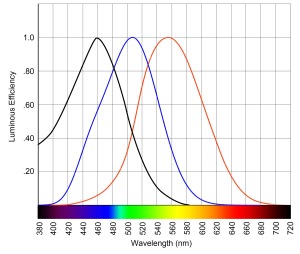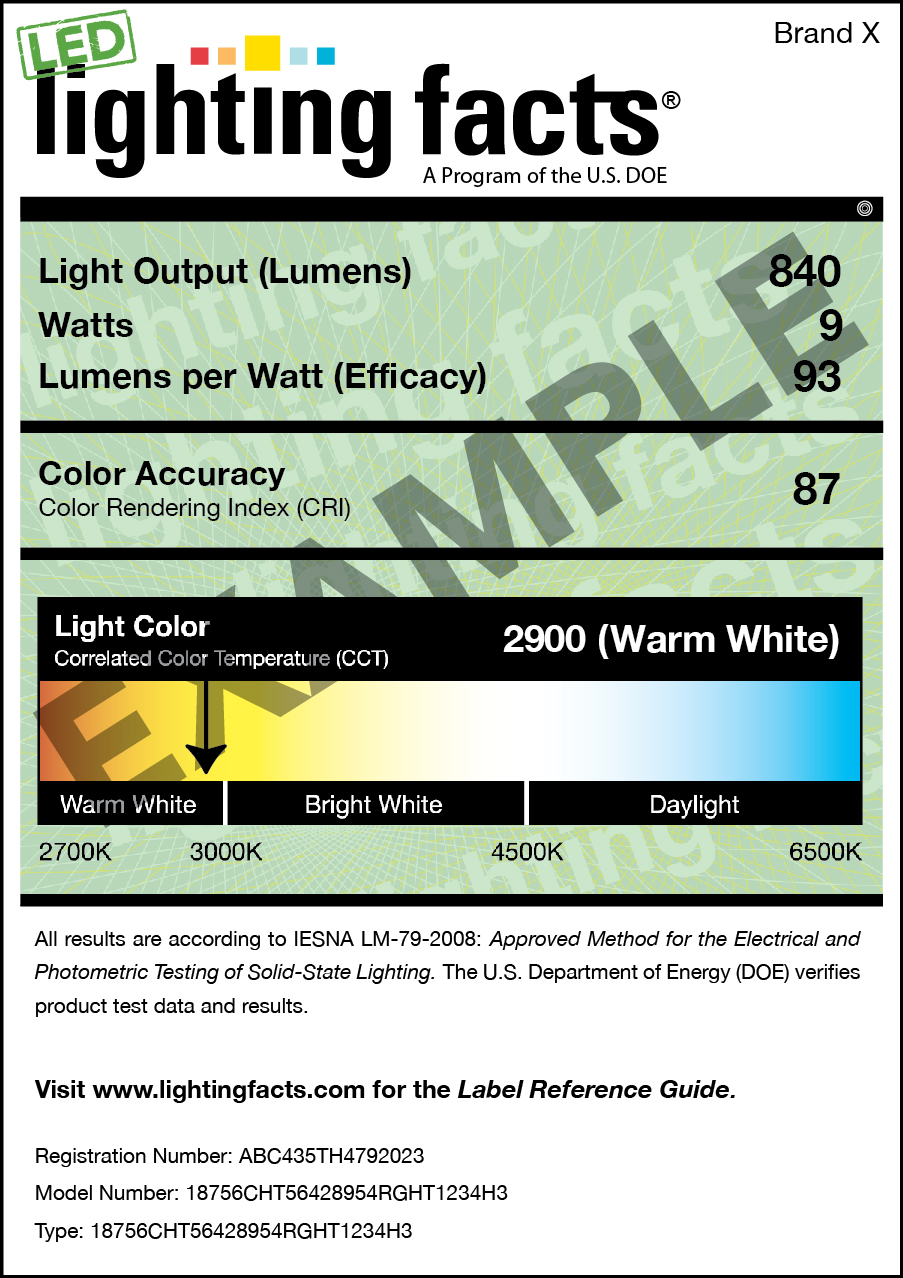You may be familiar with the idea of a color gamut from displays or from RGB LED fixtures. In both cases the gamut describes the full range of colors that the device can create. In TM-30-15 IES Method for Evaluating Light Source Color Rendition gamut (Rg) has a somewhat different meaning. It refers to the average color shift of the 99 color evaluation samples (CES) under the test light source when compared to the reference light source. The reference source used in Rg is the same source used when calculating color fidelity (Rf) (as opposed to a fixed reference source as has been proposed in other gamut metrics).
A gamut index of 100 means that, on average, the test light source doesn’t change the hue or saturation of the CES compared to the reference source. An Rg above 100 indicates that the test light source, on average, increases the saturation of the CES producing colors that are more vivid. An Rg below 100 indicates that the test light source decreases the saturation of the CES producing colors that are less saturated.
The addition of a gamut index is a huge improvement over the single CRI (Ra) number that we’re used to. With Ra, every shift from a match to the reference source, whether it increases or decreases saturation, is treated equally and the direction of the shift is not reported. However, this is important information. For instance, research has shown that in many situations most people prefer a slight increase in color saturation. With Rg designers know the direction of the color shift, and the TM-30 calculation tool also shows the shift by hue and for each of the CES.
What’s the relationship between Rf and Rg? If Rf is 100 (a match to the reference source) Rg must also be 100. If the Rf calculation doesn’t indicate a mismatch with the reference source then there is no change in saturation. As the Rf value falls the potential range of Rg above and below 100 (indicating an increase or a decrease in saturation) grows. The calculation tool includes a chart that shows this relationship and gives a visual indication of where the light source in question fits.
Another graphic, the Color Distortion Icon, is plotted on the CAM02-UCS color space. In this graphic both the reference source and the test source are shown, along with an indication of the direction and magnitude of the hue shift caused by the test source. Finally, we can even look at the color shift for each of the 99 CES.
A designer using TM-30 now has three big picture metrics to evaluate a light source: color fidelity (Rf), color gamut (Rg), and correleated color temperature (CCT). The designer can use TM-30’s calculation tool to examine the Rf and Rg of a light souce in as much detail as the project merits, from a very broad overview to a very detailed, color by color, evaluation.
The one thing that TM-30 does not do is provide guidance on the significance of the values it calculates. It is a Technical Memorandum that describes two calculation proceedures, not a design guide for using the results of those proceedures. Guidance will come later in the form of a TM-30 addenda or a design guide prepared by the IES, or guides prepared by other parties. In the meantime designers can begin to build their own understanding by comparing Rf and Rg values to the their visual evaluation of the light source, and by sharing the results of their work with others.
The pubication date has not been set, but now that the TM has been approved by the IES board of directors it should be available soon. Keep an eye on the IES bookstore and on trade publications for updates. In my opinion TM-30 is a huge improvement over CRI, and I hope that the industry enthusiastically adopts it.
Note: This post was originally published on June 15, 2015 but was taken down when the IES contacted me and claimed copyright to all graphics produced by the TM-30 calculation tool. This seems to me as absurd as Adobe claiming copyright to all pictures edited in Photoshop, but I didn’t have the time to argue. I took down the original post and have reposted it here, without graphics, and edited the text to omit references to graphics.




